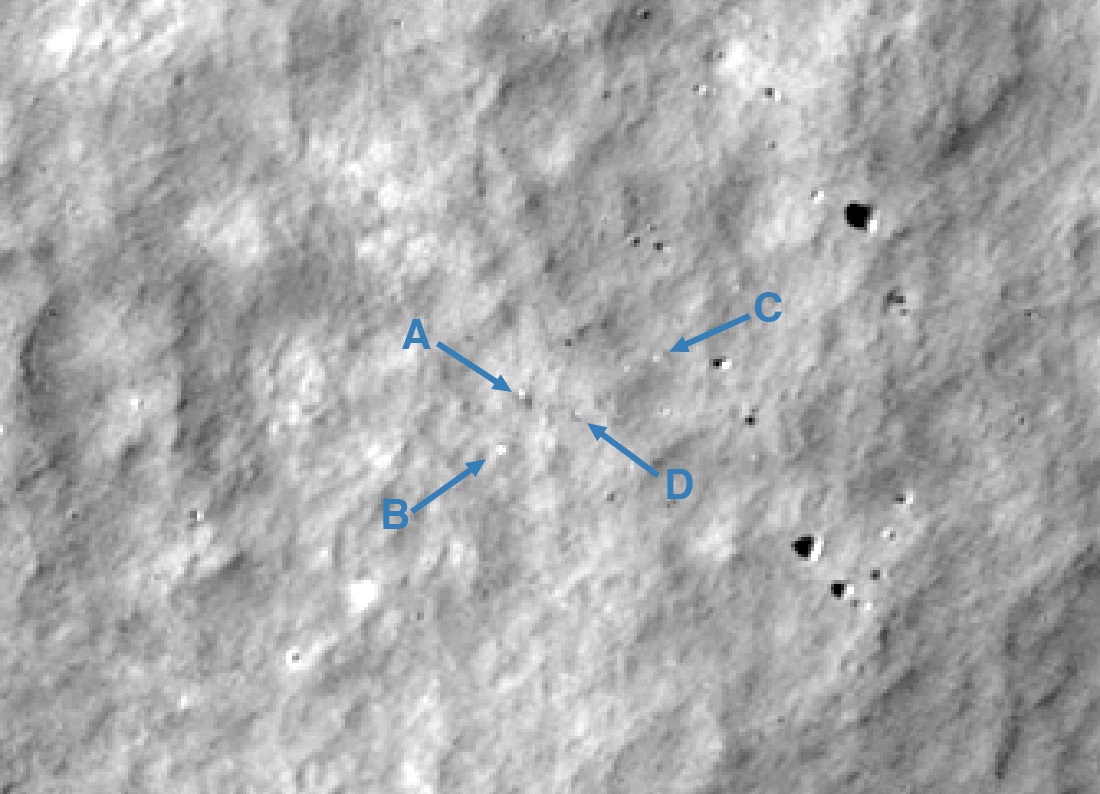WASHINGTON — A software glitch kept a lunar lander from properly determining its altitude, leading to a crash on its landing attempt last month, Japanese company ispace announced May 26.
The Tokyo-based company said its investigation into the failed landing of its HAKUTO-R M1 lander April 25 concluded that the onboard computer disregarded altitude information from a laser rangefinder on the lander as it passed over a crater rim, leading the lander to conclude it was on the surface when it was still five kilometers above it.
During an online briefing, ispace executives said the landing was going as planned through its initial phases. The altitude, as calculated by an inertial measurement unit, had converged with measurements from the laser rangefinder. The readings diverged, though, once the lander passed over the rim of Atlas Crater as it approached its landing site within it, with the measured altitude increasing by three kilometers.
Ryo Ujiie, chief technology officer of ispace, said that the onboard computer was not programmed to expect that change and ignored the data from the laser rangefinder on the assumption that the instrument had malfunctioned. That was a deliberate choice, he said, “to make our control system more robust against a sensor hardware failure.”
The sensor had not failed, though, and accurately showed the lander was still about five kilometers above the surface when the lander’s computer believed it was on the surface. The lander continued to descend at a slow rate of about one meter per second under its thrusters until it exhausted its propellant. The lander then went into freefall, crashing into the surface at a speed of more than 100 meters per second.
An image from NASA’s Lunar Reconnaissance Orbiter (LRO) spacecraft, released May 23, revealed the impact site and what appear to be several pieces of debris from the spacecraft. That impact zone was just outside the predicted landing site within Atlas Crater, although Ujiie declined to say specifically how far from its planned location the lander crashed.
A factor in the crash, he said, was a change in landing sites made after the mission completed its critical design review in February 2021. The mission was originally to land in Lacus Somniorum, a basaltic plain with few craters. That change, he suggested, was not sufficiently tested before launch.
The company changed the landing site “to maximize the benefit of the mission,” he said, for both the company and its payload customers. “This is a payload transportation business, and we need to maximize the payload service.”
The lander used software developed by Draper, but Ujiie said ispace accepted blame for the failure, linking it to requirements ispace levied on the software. Besides their relationship on software for the lander, ispace’s U.S. subsidiary is designing a lander for a Draper-led lander mission for NASA’s Commercial Lunar Payload Services program.
Other aspects of the lander performed as expected despite the software flaw. Ujiie said the lander’s guidance and control systems worked properly throughout the landing, and the spacecraft maintained communications until the moment it crashed on the surface.
That performance gives ispace confidence in the prospects for its second lander, M2, under development. “With this more extended performance, I believe can be successful in the next challenge,” he said.
That second lander remains on schedule for launch in 2024, said Takeshi Hakamada, chief executive of ispace. The software changes also will not have a “significant” increase in the cost of that mission.
Because the M1 lander did not complete its final mission milestones, he said ispace would lose about 100 million yen ($710,000) in revenue from the payload customers on the mission, a figure that would not alter the company’s financial forecasts for its current fiscal year, which runs through March 2024. The failure also was not expected to affect sales for future missions or the company’s long-term outlook.
The company did have a first-of-its-kind insurance for the landing from Mitsui Sumitomo. Hakamada said ispace was still in discussions about its claim on that policy. He declined to say how much the company expected to receive from that insurance policy but said it was not reflected in its financial forecasts. The company, he said, has a “sustainable business model” that includes capital from its initial public offering of shares in April as well as a bank loan to support work on M2 and subsequent missions.
“People say this is a landing or not, zero or one,” he said, a binary assessment he rejected. The lander achieved 8 of 10 milestones, from pre-launch preparations through maneuvers in lunar orbit, achievements the company plans to build upon for future missions.
“We are very proud of what we have accomplished so far,” he said. “We are prepared to face challenges and make every effort to improve.”
